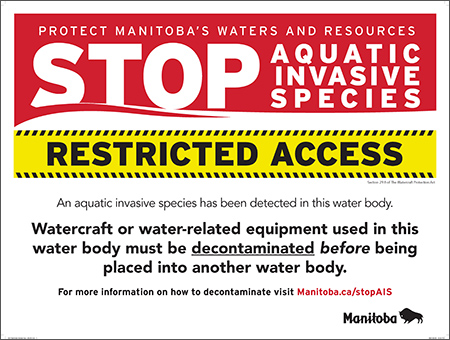 |
Lake Manitoba Zebra Mussel Detection

Active Detections
Stop the spread
Aquatic invasive species (AIS), such as zebra mussels, can be introduced to new water bodies in two main ways:
- the natural movement of water downstream
- spread by humans. AIS can hitchhike from one water body to another by watercraft and water-related equipment, such as trailers, swim inflatables, anchors and bait buckets, that are not properly cleaned, drained and dried.
Fortunately, the spread of AIS by humans is preventable.
Active detections
Click here for information on active detections and the required responses.
It is not too late
To prevent the spread of AIS water-users must always Clean, Drain and Dry all items that came into contact with a water body.
As well, in areas where an AIS is detected, items must be also decontaminated prior to placing them into another water body if they were last used in a(n):
- water body under Restricted Access, or a potentially invaded water body
- Aquatic Invasive Species Control Zone
- tributary to the first impassible barrier or connected water body of a control zone or an invaded water body

Restricted access signage (as shown) is placed at access points of invaded water bodies that are not yet designated as AIS Control Zones. This includes water bodies such as Lake Manitoba. The signs are to notify surface water users of this decontamination requirement.
Prevention is our best defense
It is essential that all water-users follow the AIS requirements to prevent the spread of aquatic invasive species.
In Manitoba, it is illegal to possess, transport, import or release an AIS.
The set fine for individuals:
- possessing an AIS is $1,296
- transporting an AIS is $1,296
- failing to decontaminate a watercraft used in an AIS Control Zone prior to launch in another water body is $2,542
- releasing an AIS in Manitoba is $2,542
Set fines for AIS offences are in effect year round.
Provincial watercraft inspection stations can assist surface water-users with inspections and decontaminations. Operating hours and locations of the watercraft inspection stations can be found here.
The open-water season and the winter (ice-covered) season checklists are helpful resources that can help you comply with the AIS requirements.